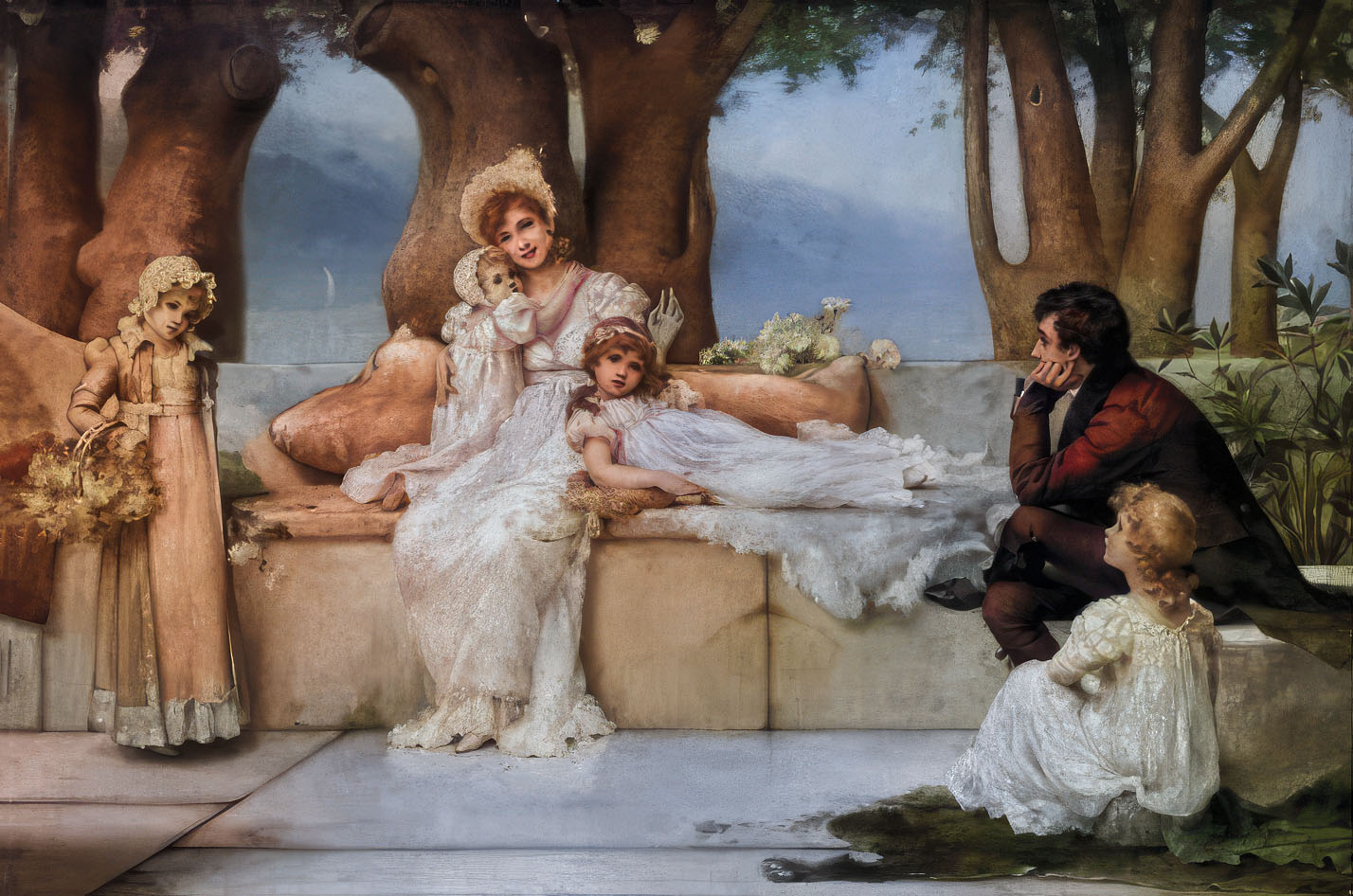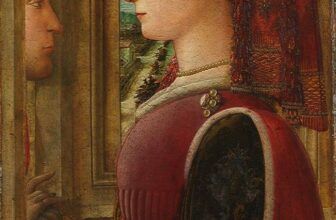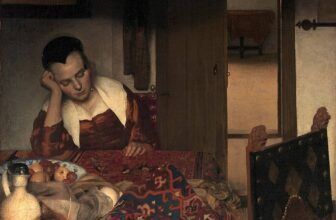They Live Together Happily Ever and After

Meaning of They Live Together Happily Ever After Painting
And They Lived Happily Ever After” (often known simply as “They Live Together Happily Ever After”) is one of British painter Maude Goodman’s most evocative works, a sentimental, idyllic scene celebrating family life and the ideal of domestic happiness.
Maude Goodman (née Matilda Goodman, 1853–1938) was born in Manchester to a Jewish family and later studied at the prestigious South Kensington School (now Royal College of Art). Under the mentorship of Sir Edward Poynter and exposure to Pre‑Raphaelite aesthetics, her style matured into sentimental domestic realism. She regularly exhibited at the Royal Academy (1874–1901), garnering acclaim for her warm tone and color .
“And They Lived Happily Ever After” was produced as an oil-on-canvas artistic composition in the late 19th or early 20th century. Its popularity led to multiple lithographs printed by T. & S. Hildesheimer & Co. in London and Austria around 1894–1902 .
What’s Depicted?
At first glance, the scene is a pastoral garden tableau featuring a family group in repose: a seated mother cradles an infant on a garden bench, with other children playing at her feet. Nearby, the father sits contentedly on the ground, engaging with another child. Tall trees and open sky create an atmosphere of peace, while bouquets and soft folds in the clothing evoke gentle elegance (see image carousel).
Though modest in action, the painting’s focus is emotional presence: the tender interactions, protective postures, and serene setting evoke an idealized vision of familial joy and completeness.
Symbolism & Meaning
Family unity & harmony – The composition’s circular arrangement of figures suggests wholeness and emotional connection.
Motherhood as nurturer – The mother’s nurturing pose echoes Victorian ideals of maternal protection and care.
Children as innocence & continuity – The varied ages symbolize growth, future hope, and the cycle of life.
Rural idyll & retreat – The garden setting suggests escape from industrial life, a nostalgic pastoral refuge.
Title’s fairy tale resonance – The phrase “happily ever after” projects fairy-tale magic onto real domestic life, aligning everyday moments with timeless romantic ideals.
Together, these elements assert that everyday domesticity deserves celebration, just as legendary happy endings do in stories.
Artistic Style & Genre
Goodman’s work blends Victorian sentimentality with Pre‑Raphaelite realism. The lithographs mimic her canvas style: carefully rendered figures, soft gradations, and natural settings. Though the original is oil on canvas, most surviving pieces are lithographic reproductions, often hand-tinted .
This piece fits within the broader genre painting tradition: scenes of domestic life created for emotional connection rather than portraiture or grand narratives.
Production & Reproductions
Oil original: The original canvas likely painted in the 1890s.
Lithographs: Printed c. 1894–1902 by T. or S. Hildesheimer & Co. in London/Manchester, with hand-tinted versions emerging later, some printed in Austria .
Modern prints: Today it’s available widely as giclée canvas and wall prints, often sold through home-decor retailers like Wayfair and Global Gallery .
Interpretation & Cultural Significance
In Victorian Britain, family and domesticity were cornerstones of moral and social identity. Goodman’s painting reinforces this worldview, offering both emotional warmth and moral reassurance. The painting isn’t just a visual, it’s a social statement, saying: happiness is found in love and family.
Its continued popularity into the 20th and 21st centuries shows that its themes remain universally appealing. Unlike abstract movements, Goodman’s sentimental realism still resonates with audiences who value relatable, emotionally direct art.
Where Can You See It Today?
Museum/institutional collections: No major museums currently list housing Goodman’s original.
Private collections: Most known originals and hand‑tinted lithographs are privately owned and occasionally appear in online auctions or antiques listings .
Contemporary prints: Accessible through commercial outlets, Wayfair, Global Gallery, Amazon, etc., often as decorative canvas prints .
Why It Still Matters
Emotional nostalgia: Modern life remains hectic, this comforts by evoking simpler, happier domesticity.
Feminine artistic voice: Goodman carved a successful career as a female artist in patriarchal Victorian art circles .
Commercial success story: Her prints are early examples of art becoming mass-market decor, prefiguring our giclée and poster culture.
Cultural artifact: Reflects changing ideals around family, gender roles, and emotions in art history.
A Closer Look: Scene Analysis
Mother and infant: Central to the composition, soft gaze, cradle pose, emotional gravity.
Father at rest: Seated lower, relaxed, supportive presence, egalitarian view of parenting.
Garden backdrop: Romanesque bench and budding flora evoke timeless beauty.
Costume details: Clothing suggests upper-middle-class comfort; styles possibly late-Victorian/Edwardian.
Lighting & color: Soft, even light, no harsh shadows. Lithographs often lightly tinted; originals likely had gentle hues.
“And They Lived Happily Ever After” endures as both a charming piece of sentimental art and a notable artifact of Victorian culture. Maude Goodman’s talent for capturing warmth and emotion, combined with the painting’s reproduction success, ensures its continued connection with viewers. It represents not just a family at rest in a garden, but a universal yearning for love, connection, and the comfort of ‘happily ever after.’
Its ability to evoke nostalgia, engage viewers emotionally, and represent cultural ideals, while also spotlighting a female artist’s success, makes it more than a pretty picture. It’s a bridge between past and present, between storybook ideals and real human hearts. image/1000museums.com




